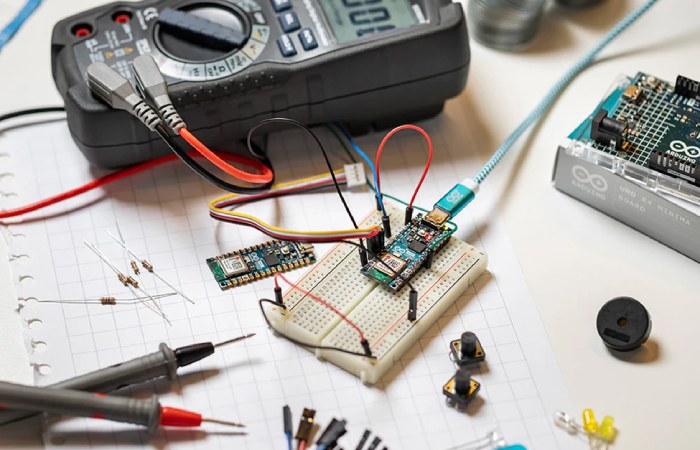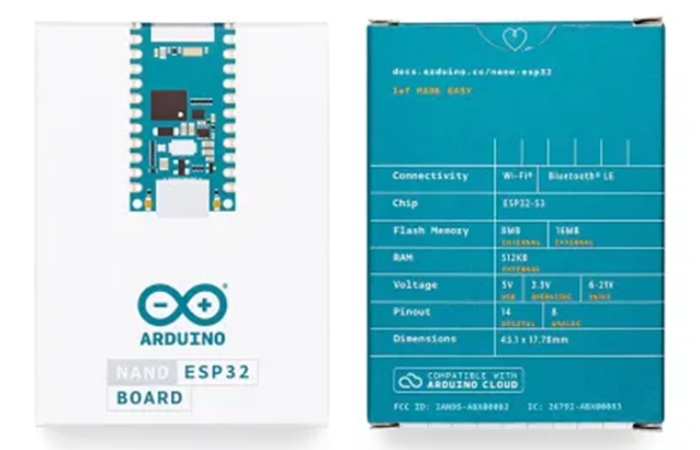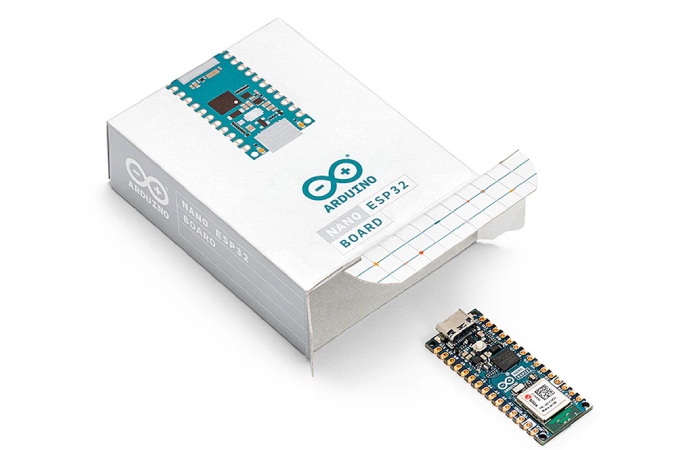The Internet of Things (IoT) is redefining in what way we interact with our surroundings. From smart regulators that learn our habits to fitness devices that track every heartbeat, the modern world runs on data. At the centre of this connected revolution lies one crucial concept: the Wireless Sensor Network (WSN).
A WSN allows multiple devices to sense, collect, and share environmental or activity data seamlessly. One of the most efficient and developer-friendly ways to build such a network is through the Arduino Nano ESP32. This small yet capable microcontroller combines processing power with WiFi and Bluetooth® connectivity.
This article explores how multiple Arduino Nano ESP32 boards can work together to create a wireless sensor network for home automation and fitness monitoring, merging two major IoT use cases into one innovative ecosystem.
Understanding the Concept of a Wireless Sensor Network

A Wireless Sensor Network is a scheme composed of distributed sensor nodes that communicate wirelessly to collect and transmit data. Each node typically includes:
- Sensors – to measure physical or environmental variables such as motion, light, temperature, or heart rate.
- A microcontroller – to process the gathered data locally.
- A transceiver – to send and receive information wirelessly.
- A power source – usually a battery or USB power.
The network usually includes one central hub (or gateway) that aggregates data from all sensor nodes, processes it, and sends it to a server, dashboard, or cloud platform.
Why the Arduino Nano ESP32 Is Ideal for WSN Applications 
The Arduino Nano ESP32 combines the flexibility of the Arduino platform with the power of the ESP32-S3 microcontroller. Its compact size, energy efficiency, and dual wireless connectivity make it an ideal choice for wireless networks that require multiple devices to communicate efficiently.
Core Advantages
- Dual Connectivity: Built-in WiFi and Bluetooth® Low Energy (BLE) allow both local and internet communication.
- Compact Form Factor: Fits easily into small enclosures, wearable devices, or embedded systems.
- Energy Efficiency: Designed for low-power IoT applications; supports various sleep modes.
- Ease of Development: Fully compatible with the Arduino IDE and MicroPython, enabling fast prototyping.
- Scalable: Multiple boards can be added to a network without changing its core structure.
These attributes make the Nano ESP32 a strong foundation for sensor networks in both smart homes and personal fitness environments.
How Multiple Nano ESP32 Boards Form a Wireless Sensor Network
In a basic setup, one board serves as the central coordinator (a WiFi hub), while several others act as sensor nodes (BLE peripherals).
1. The Central Hub:
- Connects to the local WiFi network.
- Receives Bluetooth data from all peripheral nodes.
- Processes and uploads the collected data to a server or mobile app.
2. Peripheral Nodes:
- Each node gathers data using attached sensors (temperature, motion, or heart rate).
- Sends the data to the central hub using BLE.
- Operates at low power to maximize battery life.
This decentralised architecture allows for flexible expansion — you can add or remove nodes without disrupting the entire system.
Wireless Sensor Networks for Smart Homes
In smart homes, comfort and efficiency depend on automation and data. A WSN based on the Arduino Nano ESP32 can provide valuable real-time insights and control options without relying on expensive commercial systems.
Example Applications
- Environmental Monitoring:
Temperature, humidity, and air-quality sensors installed in each room can feed data to the central hub. The collected information can help maintain an ideal indoor environment. - Motion-Based Lighting Control:
Motion sensors connected to Nano ESP32 nodes detect presence and automatically adjust lighting levels, saving energy. - Energy Management:
Smart plugs or current sensors track energy usage. The data can reveal consumption patterns and identify areas to optimise power use. - Security Automation:
Door, window, or vibration sensors can send alerts to the central system, offering an affordable way to enhance home security.
By distributing tasks across multiple sensor nodes, the network becomes more reliable and easier to maintain than a single centralised system.
Wireless Sensor Networks in Fitness Monitoring

In fitness applications, wearable and equipment-mounted sensors provide insights into movement, stress levels, and physical performance. Using multiple Arduino Nano ESP32 boards, these sensors can communicate within a single wireless ecosystem.
Example Implementations
- Smart Gym Setup:
Each fitness machine — such as a treadmill or stationary bike — can be fitted with an ESP32 node. These nodes track parameters like speed, distance, and repetitions, then transmit data to a central hub that logs performance metrics. - Wearable Fitness Sensors:
A Nano ESP32 with a heart-rate or motion sensor can be used as a lightweight wearable device. Data is sent via BLE to a smartphone or central hub, allowing real-time tracking of workout intensity. - Posture and Motion Analysis:
Accelerometer-based nodes can be attached to joints or equipment to monitor body alignment, helping users improve form and prevent injuries. - Environment-Aware Workouts:
Additional nodes can measure temperature and humidity to optimise workout conditions or alert users when the environment becomes less suitable for exercise.
By interlinking all these nodes, users gain a holistic view of their workouts — blending environmental awareness with body performance data.
Design Considerations for a Reliable WSN
When designing a wireless network with multiple Nano ESP32 boards, it’s important to consider communication reliability, power management, and data security.
1. Communication Protocols
- Use BLE for short-range, low-power communication between nodes.
- Use WiFi for high-bandwidth data transfer to cloud platforms or dashboards.
- Implement retry logic to prevent data loss in noisy wireless environments.
2. Power Efficiency
- Enable deep sleep modes during inactivity.
- Use efficient sensors that consume minimal power.
- Opt for rechargeable or replaceable lithium-ion batteries for portable nodes.
3. Data Synchronisation
- Assign timestamps to each sensor reading.
- Maintain lightweight data packets for faster transmission.
- Use buffers in the hub to prevent data overflow.
4. Security
- Implement basic encryption for WiFi and BLE communications.
- Use password-protected dashboards or mobile apps for remote monitoring.
- Regularly update firmware to patch potential vulnerabilities.
Integrating the System with Cloud Platforms
Once data from all sensor nodes reaches the central WiFi hub, it can be sent to cloud-based IoT platforms for visualisation and analysis. Platforms such as Blynk, ThingSpeak, or Arduino IoT Cloud allow users to create interactive dashboards without advanced backend development.
Through these dashboards, users can:
- View temperature, motion, or heart-rate graphs in real time.
- Receive alerts when readings cross set thresholds.
- Automate actions like turning off lights or activating cooling systems.
This combination of local Bluetooth communication and cloud-based WiFi connectivity delivers the best of both worlds: real-time local response and global accessibility.
Scalability and Real-World Impact
A significant advantage of using the Arduino Nano ESP32 for wireless networks is scalability. The system can start with just two boards — a hub and a node — and later expand into a full smart home or fitness-monitoring network.
In households, such networks can help optimize energy use and improve safety. In gyms or rehabilitation centres, they can simultaneously track performance metrics for multiple users. The same approach also applies to schools, labs, and healthcare environments that need distributed monitoring systems.
Challenges and Future Improvements
While the technology offers flexibility, several challenges need to be addressed for real-world use:
- Limited BLE Range: Walls and obstacles can affect communication. Future versions can include mesh networking to extend range.
- Power Limitations: Continuous operation may drain small batteries quickly; integrating solar or kinetic charging could help.
- Data Privacy: Fitness data is sensitive; ensuring secure data storage is critical for user trust.
As microcontrollers and sensors become more energy-efficient, these issues will continue to diminish, opening the door to even more seamless IoT experiences.
Conclusion
A Wireless Sensor Network built with multiple Arduino Nano ESP32 boards offers a cost-effective and flexible solution for both smart home automation and fitness monitoring. By combining WiFi and Bluetooth capabilities into a single compact platform, these boards enable devices to communicate, analyse, and respond intelligently to real-world conditions.
Whether it’s tracking your workout metrics or maintaining a comfortable indoor environment, such systems demonstrate the power of distributed, sensor-based automation. As IoT continues to evolve, the Arduino Nano ESP32 remains a versatile tool for creators who want to bridge the gap between data and daily life.

